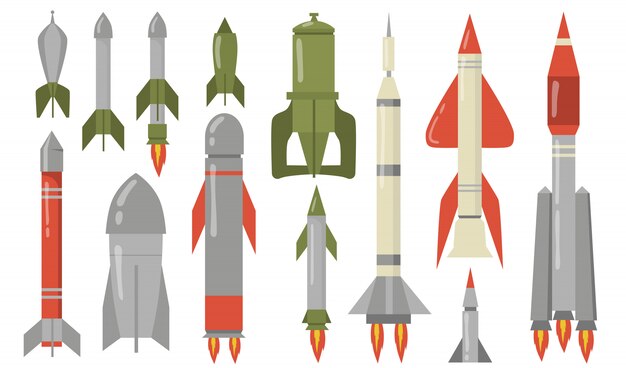A missile is a self-propelled guided projectile that, as opposed to a rocket, has a aerodynamic capability. The word missile comes from the French language meaning “to throw”. A missile may be armed with an explosive warhead, incendiary chemicals or nuclear warheads. It is propelled by rockets or jet engines. Missiles are used in warfare as well as in civilian applications such as law enforcement and self-defense. In its broadest definition, a missile can be any thrown object.
The first missiles were invented in ancient times. The Chinese used arrows fitted with wings to fly at their enemies during the Siege of Ma’seru in 659 BC. The Greeks used javelins and sling-stones as missiles in the Peloponnesian War (431-404 BC). The Romans also used missiles in warfare; they had catapults and ballistae that could hurl large objects at enemy fortifications and soldiers.
In the Middle Ages, crossbows were developed that had much greater range and accuracy than earlier weapons. They were often used to destroy siege engines and other large targets from afar. Missiles were also used extensively in naval warfare during this period; ships would fire grappling hooks attached to long ropes at enemy vessels in order to board them and fight hand-to-hand combat on deck.
During the Renaissance, firearms became increasingly prevalent on European battlefields. Cannons firing metal balls could cause extensive damage to enemy property and personnel, but they were not very accurate over long distances. Muskets improved upon this by using a lead ball that fit snugly into the barrel, making for much more precise shooting; however, they still lacked range and power compared to today’s modern weaponry. Early grenades were also developed during this time; these rudimentary bombs could be lobbed at enemies, exploding on impact causing shrapnel injuries .
Advances in metallurgy led to the creation of stronger explosives which made bigger guns possible resulting in ever more destructive firepower throughout the 18th century culminating Napoleonic era where entire city walls could be destroyed by artillery barrages.. In 1885 Paul Giffard designed and successfully flew the first heavier-than-air powered aircraft , opening up a new era of potential weapon systems using aerial platforms . Aviation continued to develop rapidly through World War I where fighter planes engaged each other dogfighting as well as attacking ground targets with machine guns & later bombs . However it was not until World War II that military aviation truly reached its potential with coordinated widespread use strategic bombing against industrial & population centres & tactical close air support of ground troops becoming standard features of modern warfare . This led directly development surface-to-air missiles (SAM) which began appearing towards end WW2 providing defence against enemy aircraft . SAM systems have evolved considerably since then incorporating ever more sophisticated radar guidance & multiple independently targetable reentry vehicles (MIRV) warheads leading current state art being US Navy’s Aegis system able track & intercept ballistic missiles travelling at speeds Mach 22 . However most lethal SAM probably Russia’s S300/S400 series which reputedly can take out anything short American B1 Spirit stealth bomber though admittedly latter very hard target detect let alone hit given tiny radar signature & high speed low level flight profile There many different types anti aircraft weapons varying size role including man portable shoulder fired variety such ubiquitous Stinger though these days most serious militaries tend favour larger vehicle mounted options like US Army’s Avenger or Russian Pantsir due increased reliability longer range better armour protection crew Against smaller faster targets like cruise missiles decoys electronic countermeasures (ECM) become important active methods fooling incoming projectiles into missing real targets These kind soft kill defences work together passive ones like smoke screens chaff nets physical barriers make direct hit harder achieve Without doubt though biggest problem facing all AA defences whether land , sea air based proximity fuses Since start WW2 vast majority casualties caused munitions detonating too close people friend foe alike Though design miniaturisation computers has helped reduce problem it remains significant challenge especially when collateral damage must avoided instance targeting ballistic missile warheads mid flight requireshitting small moving target less 10 metres across travelling supersonic speeds considerable distance away Even successful interception creates risk debris scattered over wide area potentially harming civilians below So while great strides made developing effective AA systems clear winning battle preventing loss life property entirely dependent finding diplomatic political solution stopping hostilities occurring first place


